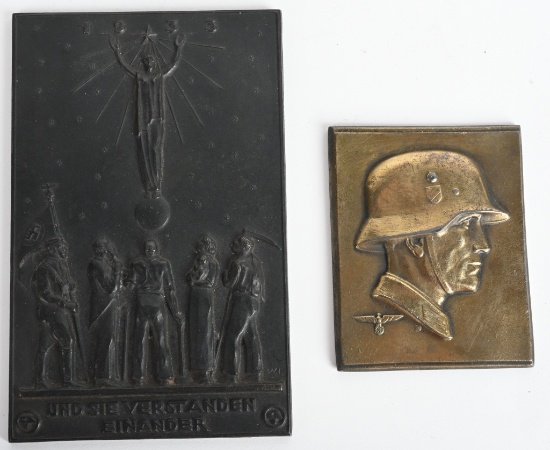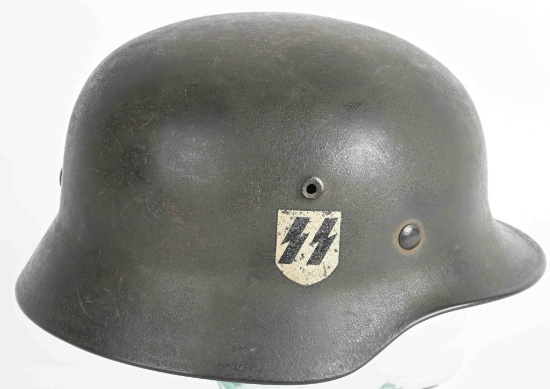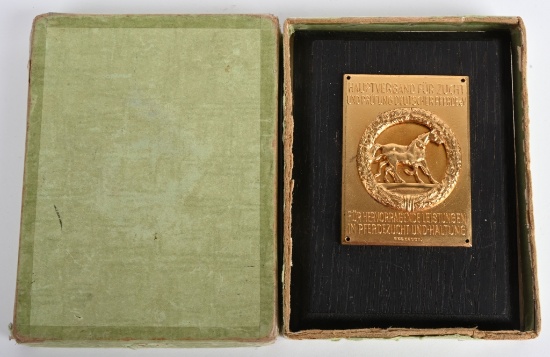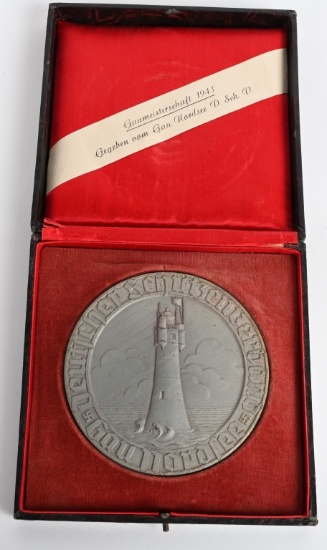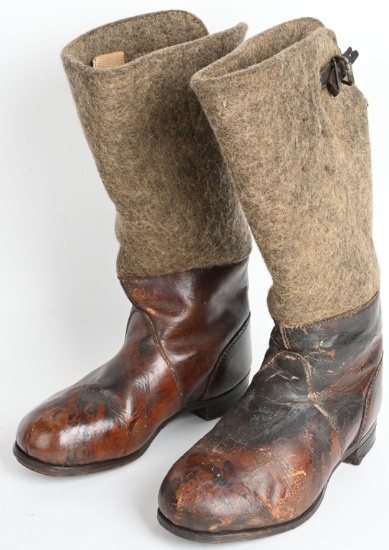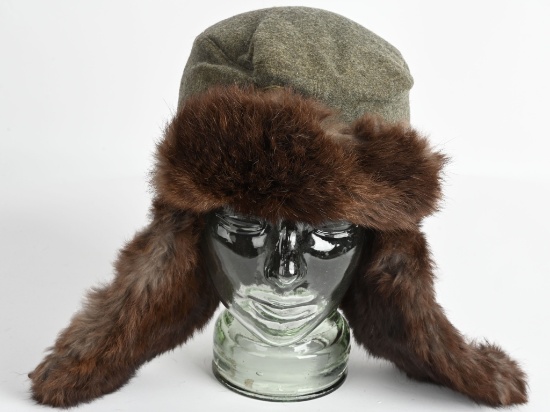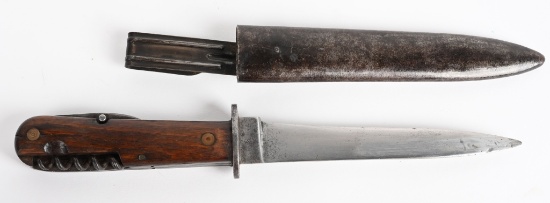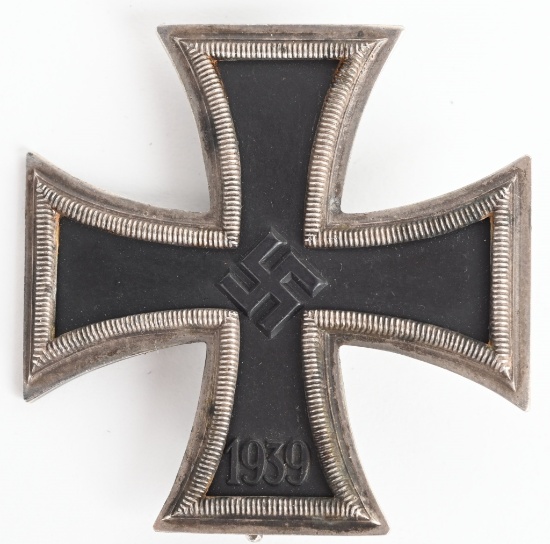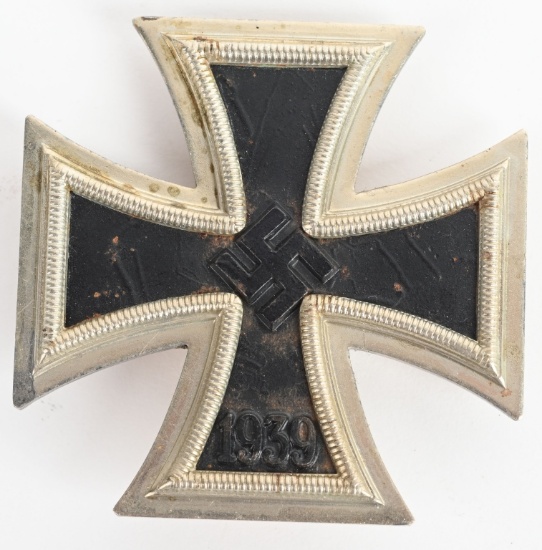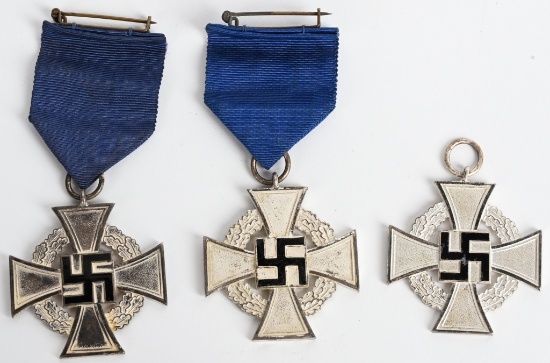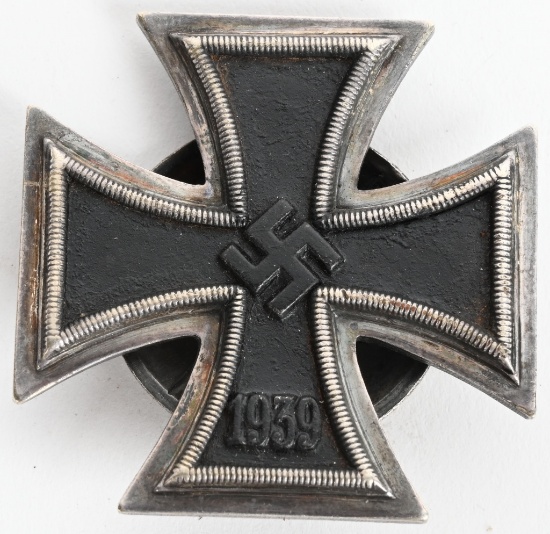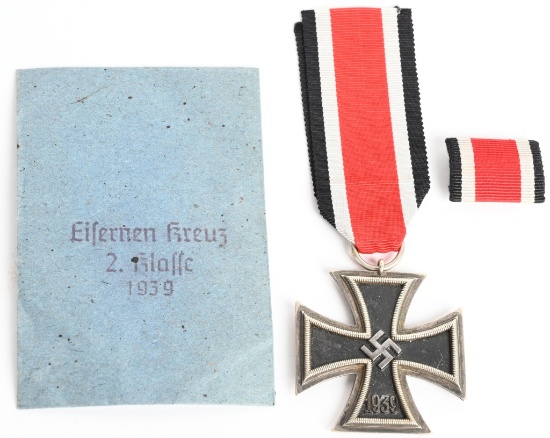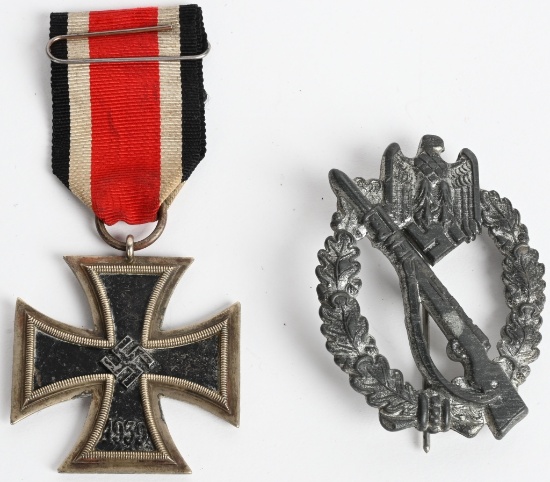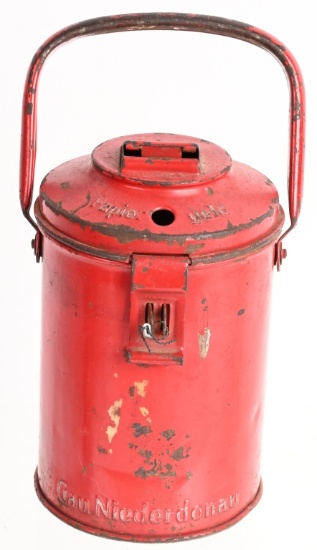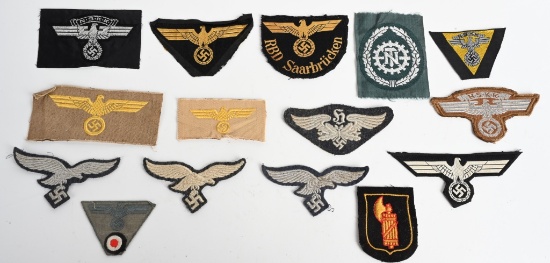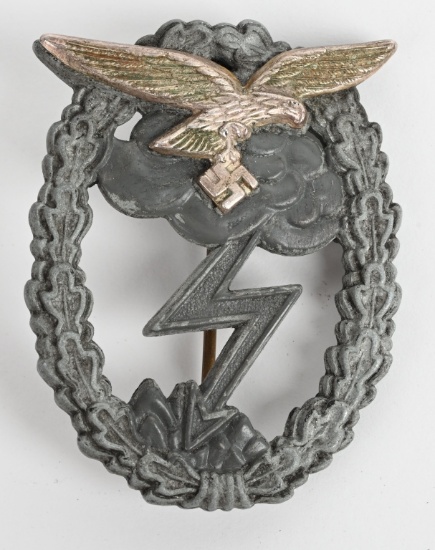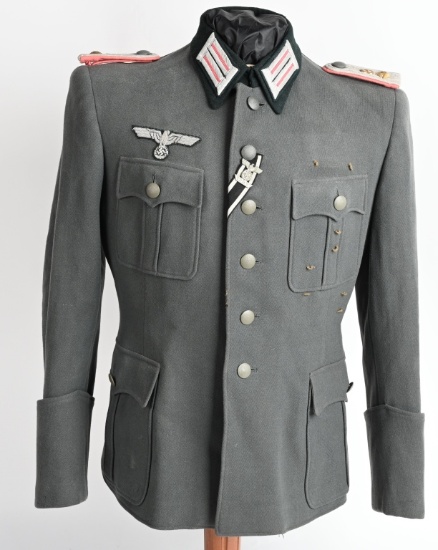
PREMIER MILITARIA & EDGED WEAPONS AUCTION

PREMIER MILITARIA & EDGED WEAPONS AUCTION
See Special Terms for additional fees
Cash Payment Discount: 3%
Description
PROUDLY PRESENTS
PREMIER MILITARIA & EDGED WEAPON AUCTION
OVER 700 LOTS OF MILITARIA FROM THE 18TH TO THE 20TH CENTURY. MORE THAN 25 LOTS of CIVIL WAR INCLUDING SWORDS, ACCOUNTREMENTS, IMAGES and MORE, INCLUDING AN IDENTIFIED CONFEDERATE POW'S SHELL JACKET;
WW1 and WW2 US GROUPINGS, EDGED WEAPONS, HELMETS, MEDALS, FLAGS, UNIFORMS, INSIGNIA, PATRIOTIC POSTERS and MORE INCLUDING MERRILL'S MARAUDERS GROUPING, NAMED MEDAL GROUPINGS, PAINTED COMBAT HELMETS, AND MORE. 30 PLUS LOTS of IMPERIAL GERMAN SWORDS, HEAD GEAR, MEDALS and MORE. 400 PLUS LOTS of WW2 NAZI GERMAN ITEMS INCLUDING a TRANSITIONAL WAFFEN SS HELMET, NAZI GERMAN ORG. TODT UNIFORM, NAZI GERMAN DIPLOMAT DAGGER, BADGES, MEDALS, INSIGNIA, HELMETS, UNIFORMS, SWORDS, BAYONETS, ACCOUTREMENTS, NSDAP PARTY UNIFORMS and MUCH MUCH MORE! JAPANESE ITEMS INCLUDING A PARATROOPER PARACHUTE, JAPANESE KATANA SWORDS, TANTOS, FLAGS, MEDALS, BADGES and MORE. KOREAN AND VIETNAM WAR LOTS, INERT ORDNANCE COLLECTION INCLUDING AN E1R1 FLAMETHROWER, INERT RPG, INERT MORTARS, INERT... Show more Show Less
Cash Payment Discount: 3%
Participation Requirements: Valid Credit Card required for bidding approval
Payment Options: Visa, MasterCard, Discover, American Express, Check, Money Order, and Wire Transfer
Visa MasterCard Discover American Express
Payment Instructions: SALES TAX All buyers will pay applicable state sales tax. Sales tax is require if mandated by the state you reside in for all internet sales and will be added to your invoice. If buyer provides a current state exemption form there will be no sales tax added. PAYMENT All merchandise must be paid in full within ten (10) days of the date of the sale. Purchases totaling $20,000 or more must be paid within three (3) days of the date of the sale. Call 440-527-8060 to pay your invoice by phone or mail payment to: 38198 Willoughby Parkway, Willoughby Ohio, 44094. Absentee bids placed through www.milestoneauctions.com and Proxibid.com will be auto charged to the credit card entered 48 hours after the end of the sale. If you wish to pay by another method please contact us within 48 hours after the sale. We accept Visa, MasterCard, Discover, personal checks/ certified checks, wire transfer, money orders, and cash. CREDIT CARD - For first time buyers and credit card charges greater than $2,500.00 buyers must complete the bottom portion of the invoice and must specifically sign the acknowledgement of our terms of sale before we will accept payment via credit card. We do offer the convenience of paying automatically by credit card. If you wish have your card automatically charged for all purchases please complete our Authorization for Automatic Credit Card Use. We have this form available upon request. Split payments are subject to a 23% buyer premium if a credit card is used as any form of total payment. CHECK - There will be a $30.00 service charge for returned checks. Make checks payable to: Milestone Auctions LLC. Milestone Auctions reserves the right to hold items paid for by personal or company check until said check clears (14 days). Milestone Auctions has the right to hold all checks over $2,000.00. Customers who have an established successful buying In the few situations where a successful bidder does not remit payment when due, Milestone Auctions will proceed with the legal steps necessary to protect its interests and will block the bidder from future auction participation.
Currency Type: USD
Shipping Instructions: Please see our terms and conditions.
Preview Date & Times: Items are available for preview 7 days prior to the sale by appointment. Auction day preview is February 13th at 8AM.
Checkout Date & Times: Please contact the auction company for checkout dates & times.
Location: 38198 Willoughby Parkway, Willoughby, OH 44094
Driving Directions:

By clicking "Confirm Buy" you are agreeing to the terms of the sale. Instant Purchase items may have additional fees such as an Internet Premium, Sales Tax, Shipping or other fees not included in the Instant Purchase price. Please see Auction Information for full details.
Payment Type:
WWII NAZI GERMAN PLAQUE LOT NSDAP AND WEHRMACHT
Lot # 400 (Sale Order: 451 of 784)
WWII NAZI GERMAN WAFFEN SS SINGLE DECAL HELMET
Lot # 401 (Sale Order: 452 of 784)
WWII NAZI GERMAN HORSE BREEDING TROPHY IN BOX WW2
Lot # 402 (Sale Order: 453 of 784)
WWII NAZI GERMAN SHOOTING AWARD SMALL BORE RIFLE
Lot # 403 (Sale Order: 454 of 784)
WW2 NAZI GERMAN RUSSIAN FRONT WOOL & LEATHER BOOTS
Lot # 404 (Sale Order: 455 of 784)
WWII GERMAN LUFTWAFFE PARATROOPER CAMO PARACHUTE
Lot # 405 (Sale Order: 456 of 784)
WWII NAZI GERMAN WEHRMACHT WINTER FUR CAP
Lot # 406 (Sale Order: 457 of 784)
WWII NAZI GERMAN MACHINE GUN TOOL FIGHTING KNIFE
Lot # 407 (Sale Order: 458 of 784)
GERMAN FERNROHRLAGE 10X60MM ASKANIA SIGHTING SCOPE
Lot # 408 (Sale Order: 459 of 784)
WWII NAZI SPANISH CROSS IN BRONZE WITH SWORDS WW2
Lot # 409 (Sale Order: 460 of 784)
WWII NAZI GERMAN LUFTWAFFE RETIRED PILOTS BADGE
Lot # 410 (Sale Order: 461 of 784)
WWII NAZI GERMAN IRON CROSS 1ST CLASS BY SCHINKEL
Lot # 411 (Sale Order: 462 of 784)
WWII NAZI GERMAN 1ST CLASS IRON CROSS EKI WW2
Lot # 412 (Sale Order: 463 of 784)
WWII NAZI GERMAN 2nd CLASS IRON CROSS LOT OF 2 WW2
Lot # 412a (Sale Order: 464 of 784)
WW2 NAZI GERMAN 25 YEAR FAITHFUL SERVICE MEDAL LOT
Lot # 412b (Sale Order: 465 of 784)
WWII NAZI GERMAN SCREW BACK IRON CROSS 1ST CLASS
Lot # 412c (Sale Order: 466 of 784)
WWII NAZI IRON CROSS 2ND CLASS 65 MKD W/ ENVELOPE
Lot # 412d (Sale Order: 467 of 784)
WWII NAZI GERMAN EKII INFANTRY ASSUALT BADGE LOT
Lot # 412e (Sale Order: 468 of 784)
WWII NAZI GERMAN SPANGE IRON CROSS 1ST CLASS WWI
Lot # 412f (Sale Order: 469 of 784)
WWII NAZI GERMAN WHW RED DONATION CAN WW2
Lot # 413 (Sale Order: 470 of 784)
WW2 NAZI OBERFELDWEBEL'S M36 MOUNTAIN FIELD BLOUSE
Lot # 414 (Sale Order: 471 of 784)
WWII NAZI GERMAN PORCELAIN PLAQUE BY KPM WW2
Lot # 415 (Sale Order: 472 of 784)
WWII NAZI GERMAN LUFTWAFFE FLIGHT VISOR HAT WW2
Lot # 416 (Sale Order: 473 of 784)
WWII NAZI GERMAN CLOTH INSIGNIA LOT HEER LUFTWAFFE
Lot # 417 (Sale Order: 474 of 784)
WWII NAZI GERMAN LUFTWAFFE GROUND COMBAT BADGE WW2
Lot # 418 (Sale Order: 475 of 784)
| Bid Range | Increment |
| $0.00 - $299.99 | $10.00 |
| $300.00 - $999.99 | $25.00 |
| $1,000.00 - $1,999.99 | $50.00 |
| $2,000.00 - $4,999.99 | $100.00 |
| $5,000.00 - $9,999.99 | $250.00 |
| $10,000.00 - $24,999.99 | $500.00 |
| $25,000.00 - $49,999.99 | $1,000.00 |
| $50,000.00 - $99,999.99 | $2,500.00 |
| $100,000.00+ | $5,000.00 |

 x Cancel
x Cancel